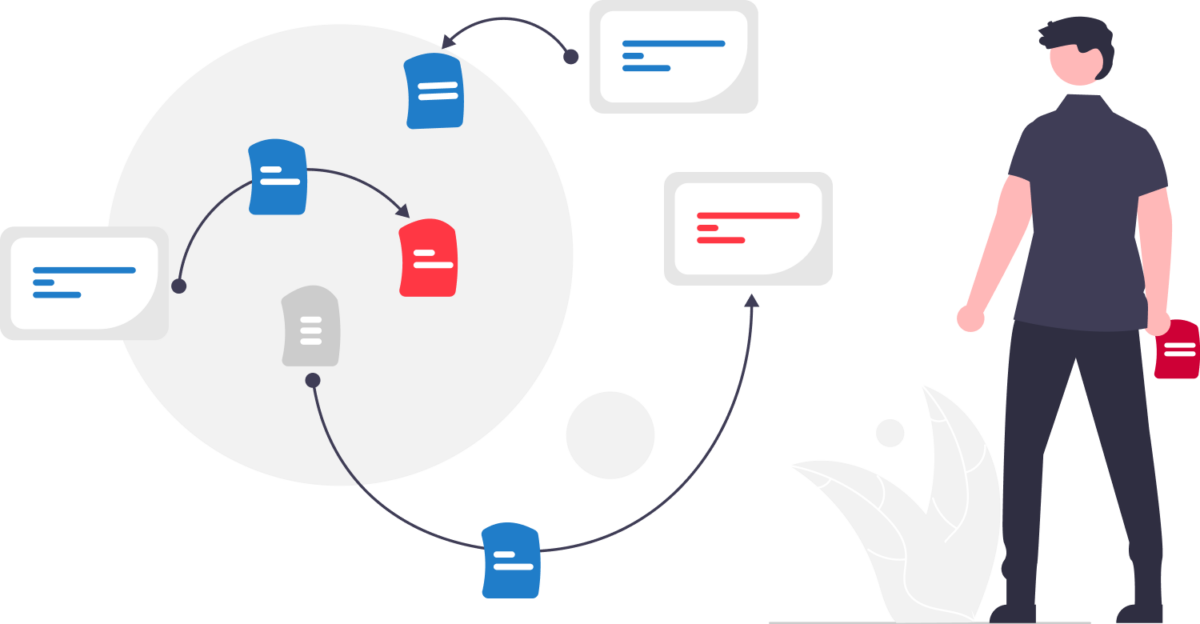If you want to improve your team’s effectiveness, efficiency, and confidence, it’s time to examine their processes for making decisions. Too often, projects are held up by decision fatigue, analysis paralysis, and more. So increasing efficiency often requires starting at the beginning of a project and examining how your team makes decisions — both big and small.
Streamlining decision-making processes helps ensure proper distribution of responsibilities and empowers team members to work independently, freeing you to focus on other tasks instead of constantly looking over their shoulders. Plus, it helps team members make better decisions faster, improving both individual and group performance.
Read on to learn more about how simplifying choices through standardized procedures, effective delegation, and decision-making frameworks can help your team make faster, better, and more confident decisions.
Balancing Standardization & Flexibility
Here at ProTrainings, we’ve seen countless times the positive impact of implementing standardized processes and guidelines. From introducing standard operating procedures (SOPs) to setting up automated systems for training and compliance, standardization streamlines workflows for greater productivity and efficiency.
Standardized processes also facilitate quality control and ensure everyone understands what is expected of them without endless follow-ups, check-ins, and reminders.
That said, it’s important to maintain a balance between standardization and flexibility so you can continue to grow as an organization and so your team members are empowered to make independent decisions when needed.
Just because an SOP works well now doesn’t mean it always will. By regularly evaluating and updating your processes, you can prevent stagnation and continually improve your team’s operations without compromising standardization.
Empowering Your Team Through Effective Delegation
As a leader, you can reduce your mental load and improve your own decision-making processes by delegating responsibility to members of your team. But how you delegate that responsibility can make a huge difference in your team members’ ability to shoulder it.
According to MIT Sloan Management Review (MIT SMR), the most effective approach to delegation — and the degree of involvement you as the leader need to have in assisting your team with delegated tasks — depends on the level of trust established between you and your team and in your organization’s processes.
As trust develops and team members take on more of the decision-making responsibility, they become empowered not only to follow established procedures but also to adapt those procedures as needed without having to wait for approval. As a result, they can make decisions quickly and confidently while adhering to standardized frameworks.
Likewise, reducing choices for your team members — both by establishing those standardized procedures in the first place and by limiting the number of decisions each team member is responsible for making in a given day — allows team members to focus solely on the most critical and impactful decisions.
Understanding & Implementing Decision Frameworks
Another way to help your team members make faster, better decisions is by implementing decision-making frameworks that are designed to streamline and simplify choices. Popular examples of such frameworks include:
- Eisenhower Matrix. Organizes tasks into four categories based on importance and urgency so you can easily determine which tasks to prioritize, which to postpone or delegate, and which to eliminate altogether.
- RACI chart. Defines each team member’s role — as responsible, accountable, consulted, or informed — in a given project to eliminate confusion about which tasks to assign to which person.
- Gil Shklarski’s “Xanax for Decision-Making” matrix. Compares two or more options by examining the benefits, costs, and mitigations for each so you can more accurately predict how the decision will impact your team.
- SPADE. Streamlines complex decisions into a simple process of identifying the setting, people involved, and alternatives, then making a decision and explaining the decision to the team.

When implementing a new decision-making framework for your team, start by explaining how the framework functions and the benefits of using it. If possible, walk your team through a practical example so they can see the framework in action.
Then, once they’ve had a chance to test it out for themselves, be sure to ask for feedback on the framework’s effectiveness in improving the quality and efficiency of their decision-making.
Measuring the Impact of Reduced Choices
Throughout the process of delegating responsibilities and simplifying decisions, it’s important to measure the impact of your efforts on your team’s performance and adjust those efforts accordingly.
Regularly check in with your team to get their direct feedback on whether implementing standardized procedures and decision frameworks has improved their efficiency and confidence in making decisions, as well as which processes have made the biggest impact.
It may take some time to build the most efficient systems for your organization, but working collaboratively with your team to share responsibility, limit choices, and adapt the systems over time will result in increased performance and long-term growth.
Streamlining Processes for Improved Performance
Just as limiting unnecessary choices from your own daily routines can help you avoid decision fatigue, standardizing and simplifying your team’s decision-making processes can empower your employees to make faster and more confident choices, leading to better performance overall.
If you’re looking for ways to simplify and standardize your CPR training process, ProTrainings can help you create a group training program that’s streamlined and tailored to your organization’s needs.
Contact us today to learn more about how ProTrainings can help you make getting your staff CPR certified easier and more efficient.
